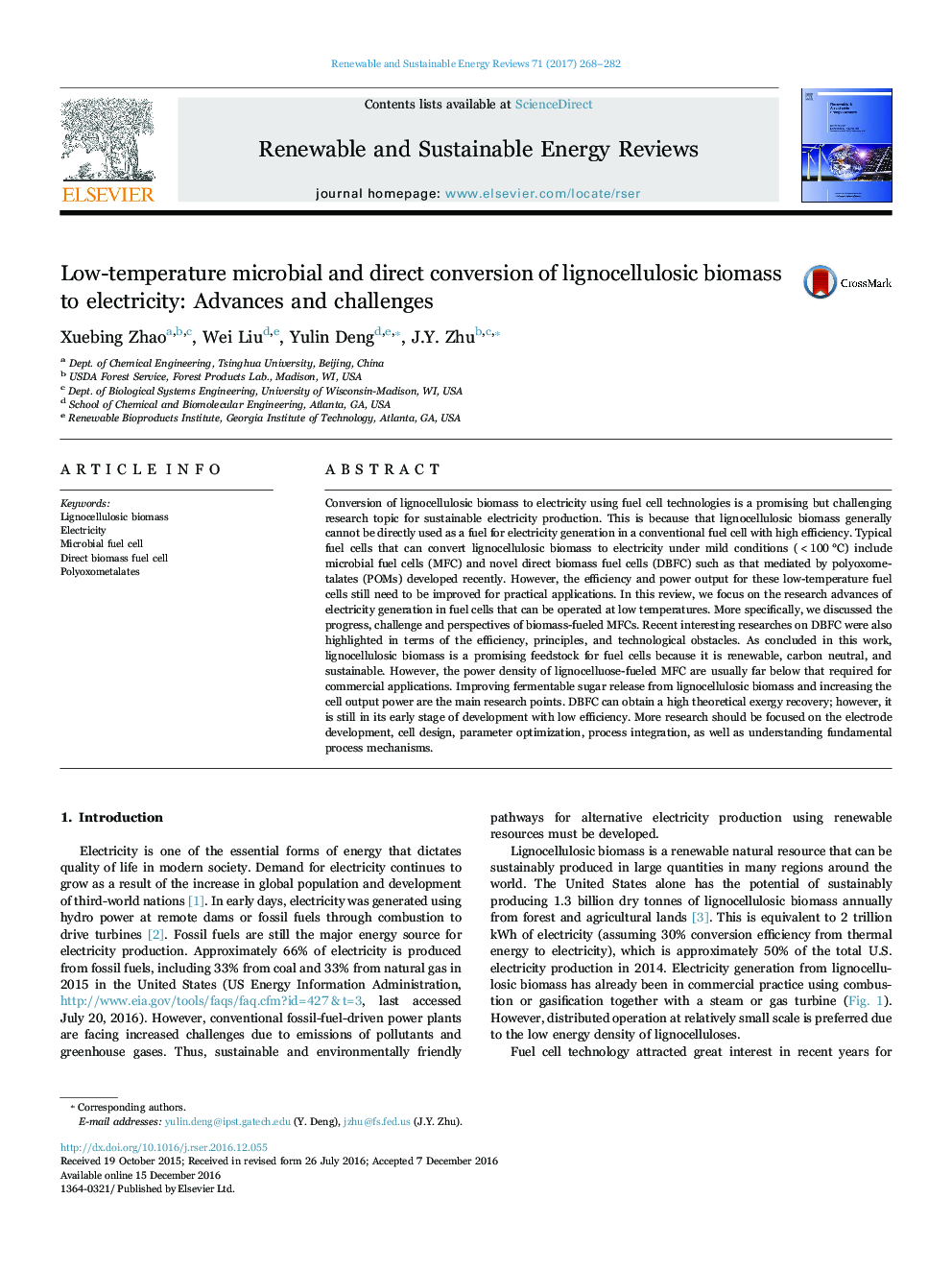| کد مقاله | کد نشریه | سال انتشار | مقاله انگلیسی | نسخه تمام متن |
|---|---|---|---|---|
| 5483039 | 1522315 | 2017 | 15 صفحه PDF | دانلود رایگان |
Conversion of lignocellulosic biomass to electricity using fuel cell technologies is a promising but challenging research topic for sustainable electricity production. This is because that lignocellulosic biomass generally cannot be directly used as a fuel for electricity generation in a conventional fuel cell with high efficiency. Typical fuel cells that can convert lignocellulosic biomass to electricity under mild conditions (<100 °C) include microbial fuel cells (MFC) and novel direct biomass fuel cells (DBFC) such as that mediated by polyoxometalates (POMs) developed recently. However, the efficiency and power output for these low-temperature fuel cells still need to be improved for practical applications. In this review, we focus on the research advances of electricity generation in fuel cells that can be operated at low temperatures. More specifically, we discussed the progress, challenge and perspectives of biomass-fueled MFCs. Recent interesting researches on DBFC were also highlighted in terms of the efficiency, principles, and technological obstacles. As concluded in this work, lignocellulosic biomass is a promising feedstock for fuel cells because it is renewable, carbon neutral, and sustainable. However, the power density of lignocelluose-fueled MFC are usually far below that required for commercial applications. Improving fermentable sugar release from lignocellulosic biomass and increasing the cell output power are the main research points. DBFC can obtain a high theoretical exergy recovery; however, it is still in its early stage of development with low efficiency. More research should be focused on the electrode development, cell design, parameter optimization, process integration, as well as understanding fundamental process mechanisms.
Journal: Renewable and Sustainable Energy Reviews - Volume 71, May 2017, Pages 268-282
